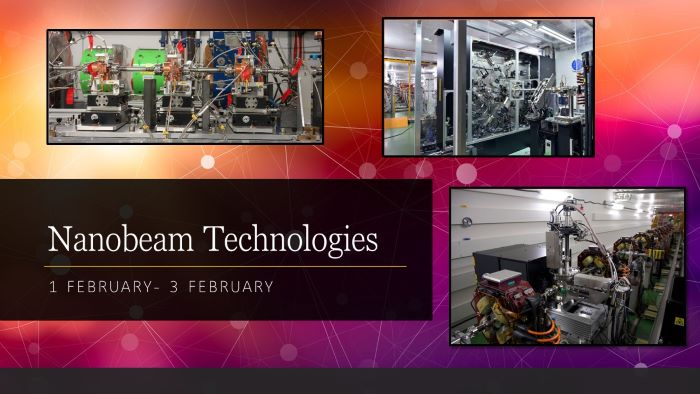Last February, the Compact Linear Collider (CLIC) team working on technical developments organised a workshop on all the different technologies developed for producing, handling, and preserving nanobeams and ultra-short bunches. Primarily revolving around hardware, it was meant to be an open forum for sharing ideas, experimental results, current limitations, and new applications of the technology that will enable smaller and smaller beams. Scientists working on High energy colliders, new generation light sources and accelerators in general came together during three half-day sessions; 168 participants from 47 institutions registered for the workshop, which featured 31 presentations over the course of 10 hours.
In the coming years, “nanobeams” will be a priority area – for CLIC and many other existing and future projects. Maybe it can be extended in the future – more from other Higgs factories, and other accelerators with similar challenges, other technologies. --Steinar Stapnes, Compact Linear Collider (CLIC) project leader.
Producing very small beams is not the result of a single technology, but the joint effort of many different players working in different areas. When talking about nanobeams, one may think focusing magnets, jitter control, metrology, geodesy, vibration dynamics, or beam instrumentation as the most obvious technologies in the game. Beam instrumentation has made, in the last years, a gigantic leap on measuring nanometre beam positions, micrometric transverse dimensions, and femtosecond bunch lengths. We may have heard about impossibly accurate cavity BPMs and electro-optic methods to scan and measure ultra-short bunches... but how about the importance of providing very thin coatings to lower both the vacuum and the impedance that could make the beam unstable and grow indefinitely? Designing and manufacturing undulators and wigglers with very high fields has the upmost importance to damp oscillations and get smaller emittances, which also come with very small aperture vacuum chambers in the order of millimetres.
The vacuum team at CERN has successfully manufactured 5 mm diameter vacuum chambers by growing copper using electroforming around a mandrel. This technology originated from the latest generation light sources and can now be implemented in the CLIC damping rings. Inversely, advances originally applied to the CLIC project, like the use of Frequency Scanning Interferometry (FSI) for dynamic alignment of accelerating components, are now being used in the high luminosity upgrade of the Large Hadron Collider (LHC) and proposed for the Future Circular Collider (FCC) study. Ultra-stable power sources for fast kickers are now under development for LHC injectors. The use of tuneable permanent magnets allows for smaller aperture, less energy consumption, and less vibrations. This technology is extended from light sources to electron colliders and back again, evolving from a fruitful exchange in the community.
We believe that the best and more efficient way to maintain and improve a new technology is to share our enthusiasm about it and disseminate our achievements. The nanobeam technologies workshop was created to fulfil this goal and create synergies between different projects with the same goals.
It is not possible to summarise all the ground-breaking subjects covered in the workshop in this brief contribution, but if you are curious about the technologies of tomorrow, all the presentations can be found in the event page. And if you would like to contribute to get the tiniest and shortest beams, do not hesitate to contact the organising team, and even join the workshop at the next opportunity. We plan to renew the call next year, hopefully in person, if the global situation allows it.

